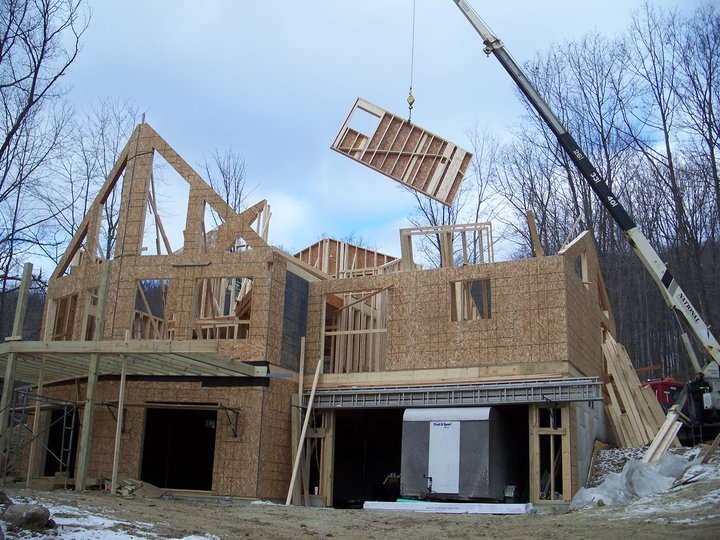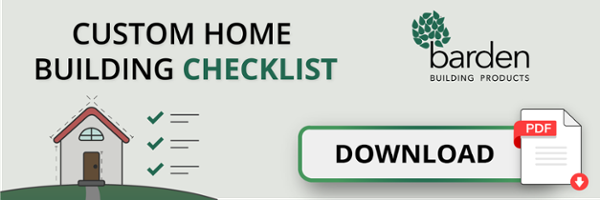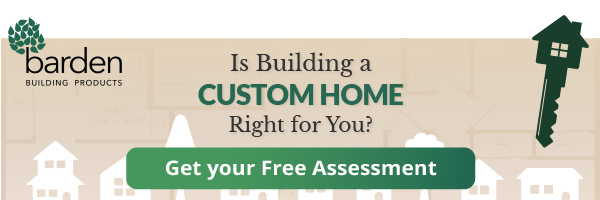
It’s something you’ve always dreamed about: building your own custom home. You’ve had this dream so long that you know exactly what you want down to the smallest detail. You even have the perfect property picked out.
But just as you’re ready to reach out to a builder, the construction crews you’ve seen working at other sites appear to be in the home stretch of their project. Before too long, the warmer weather of the current construction season will go away, making way for winter.
Looks like moving forward has to wait until next spring …
Not so fast.
Just because the construction season is nearing its end doesn’t mean you need to put your plans on hold. Regardless of the time of year, there’s no reason you can’t get moving on your custom home building process now to make your dream home a reality.
Custom Home Building Process: 3 Reasons Why Now is the Best Time to Start
Despite what common convention will tell you, the construction season isn’t limited to when the weather’s nice. In fact, weather conditions shouldn’t play a role in deciding when to get moving on taking steps to build your next home.
Custom home projects are complex, and there are a few variables that impact the the custom home building process timeline (and, in turn, the final price).
Starting on your custom home project right now gives you more than enough time to tackle:
- Design & planning
- Materials sourcing
- Budget optimization
1. Design & Planning
There’s no better time to complete this first step of building your custom home than the present.
Even if you have a fully realized visual for your home’s design, this part of the process takes time. Typically, future homeowners and their custom home builder or consultant hold a few meetings to nail down the finer details of their house. Once a preliminary design is agreed upon, the home’s plans need to be drafted, reviewed, revised if necessary, and finalized – all steps that can take a few weeks.
There’s also the matter of obtaining permits – something your consultant/builder will handle. Depending on your municipality, this also may include a waiting period.
While it may seem like the first part of custom home creation is an exercise in patience, this is completely normal. Whether a stick build, modular, or any other type, your home needs a carefully planned draft and design, and it needs approval from your local code enforcement office.
Once the preliminary “behind the scenes” work is completed, crews can begin work immediately on your home, starting with:
- Site prep
- Foundation installation (yes, even in the dead of winter it’s possible to put a foundation in!)
- Utilities installation
Panelized construction allows for work on your custom home to happen on two fronts. As the initial site work is completed, your home’s wall panels and trusses are built in a factory. By the time the site is ready, the prefabricated components are ready for delivery and immediate construction.
Within a matter of days, the panels go up and the home is made weather-tight. This eliminates the elements from the equation and makes winter construction possible.
Side note: While many builders prefer to start construction in the spring, we’ve found winter is an easier season to work in. If nothing else, the ground is frozen during the colder months. For construction crews, this means they won’t be contending with a muddy building site created by a thaw or regular rain showers.
Dig into the custom home building timeline and its milestones:
2. Material Sourcing
If the COVID-19 pandemic showed the construction world anything, it’s just how fragile supply chains are. During the pandemic, well-established supply chains were forced to contend with market conditions in a way they hadn’t before.
Because of limits on trade and production, meeting the demand for materials became a true challenge. In some cases, manufacturers rationed out materials to suppliers, while others only fulfilled large orders.
For the foreseeable future, the aftershocks of COVID on supply chains will continue to impact construction projects of all sorts. Current lumber prices are living proof of this.
Regardless of world events, giving your custom home consultant/builder as wide a window as possible to source materials isn’t a bad thing.
By working ahead sooner rather than later, your project timeline has a buffer to source components. In other words, you’ll have more than enough time to get what you need.
3. Budget Optimization
(Almost) no one goes into a custom home project with an unlimited budget.
As the pandemic showed, commodities markets can change in an instant and quickly drive up end-user costs. No market is a better example of this than timber and lumber.
Getting a pre-construction jump on the custom home building process prepares your consultant/builder to strike while the iron’s hot – or, rather, when prices are low.
With your project squared away – everything from blueprints and design to material choice and quantity – you’re able to move quickly when prices are favorable. Waiting or taking too long may mean paying more for the exact same materials, whether it’s lumber or windows, doors or other key components of a home. Markets ebb and flow on their own schedule – which doesn’t always sync with yours. Not being ready to buy materials when market conditions are right drives your project’s costs up unnecessarily.
In the world of custom home building, purchasing materials at the best price is something you’ll need to move quickly on. Most suppliers honor prices for a limited length of time. Without coming to the table prepared (knowing exactly what your project needs) you may find yourself facing a tough choice:
- Pay a higher premium for materials
- Put your project on hold until prices drop
Are There Any Specific Risks With Starting Custom Home Construction During the Winter & How Can They be Mitigated?Starting a home construction project during the colder months can pose several challenges such as slower curing of concrete, potential for frost heave, and difficulties in managing construction schedules due to shorter days and unpredictable weather. These can be mitigated by using cold-weather construction techniques like heated enclosures, choosing materials suited for low temperatures, and planning extra time for weather-related delays. Is There A Way to Expedite the Home Construction Permit Approval Process?To a certain extent. Permit approval times can significantly vary by region and municipality due to internal procedures. As we’ve found, no two are the same. The best way to keep things moving along is to come to the table prepared. Talk with local building authorities early, ensure all documentation is thoroughly prepared and in compliance with local codes, and consider hiring an expediter who specializes in navigating the permitting process. |
Custom Home Building Process: It’s Always Construction Season
Though Mother Nature, and the availability of construction crews, may say different, the custom home building process doesn’t hinge on sunny skies and warm air.
Because construction is a massive investment of time and money, there’s no better time to start work on realizing your dream like the present. By beginning work on your custom home now, you’ll minimize the risk of delays or cost spikes.
Is a Custom Home Right for You?
Find out with our free assessment!



